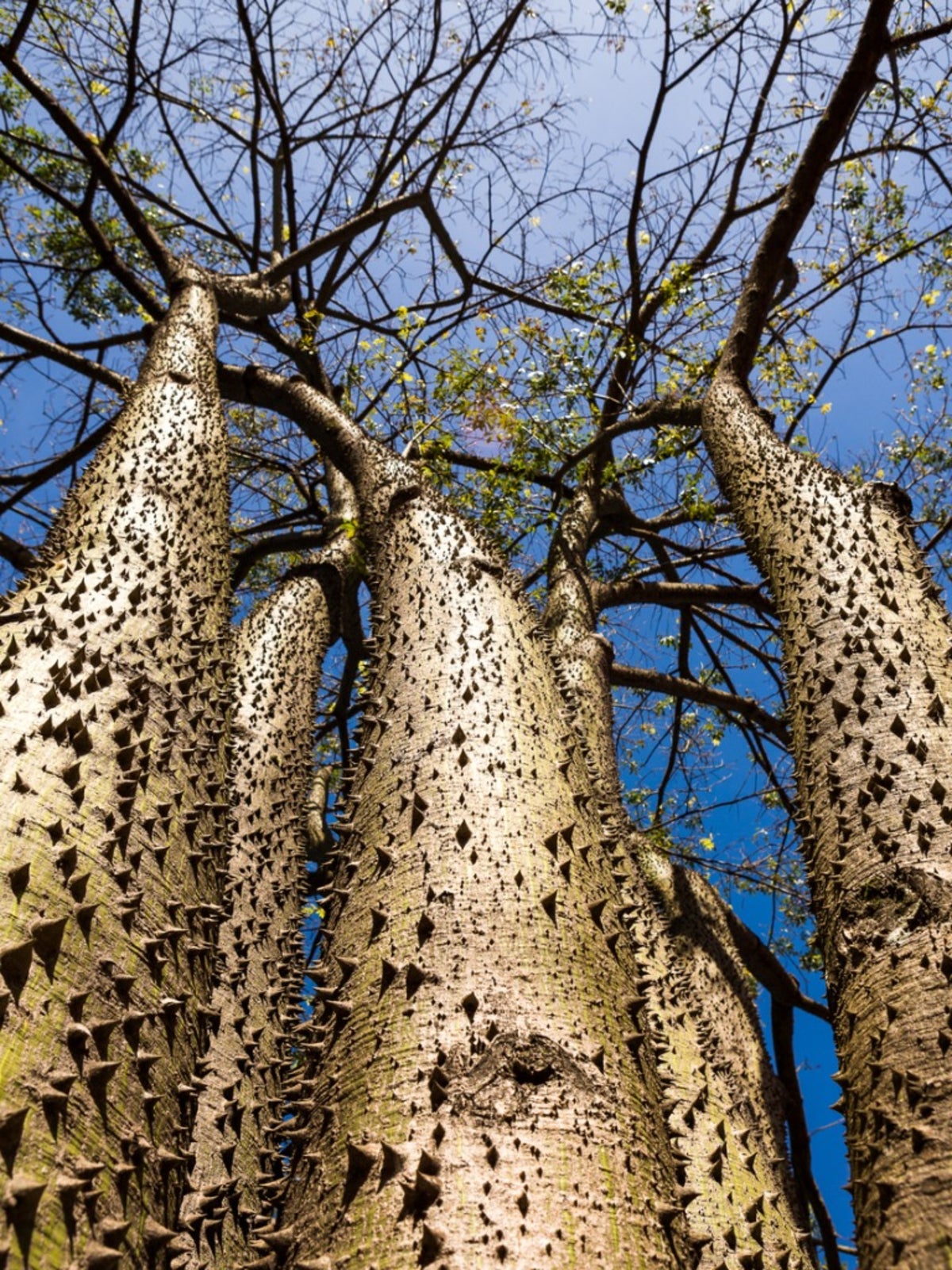What Is A Sandbox Tree: Information About Sandbox Tree Exploding Seeds


Considered one of the most dangerous plants in the world, the sandbox tree isn't suitable for home landscapes, or any landscape actually. That being said, it is an interesting plant and one that deserves understanding. Read on to learn more about this deadly, but intriguing, tree.
What Is a Sandbox Tree?
A member of the spurge family, the sandbox tree (Hura crepitans) grows 90 to 130 feet (28-40 m.) tall in its native environment. You can easily recognize the tree by its gray bark covered with cone-shaped spikes. The tree has distinctly different male and female flowers. Once fertilized, the female flowers produce the pods containing the sandbox tree's exploding seeds. Sandbox tree fruit looks like little pumpkins, but once they dry into seed capsules, they become ticking time bombs. When fully mature, they explode with a loud bang and fling their hard, flattened seeds at speeds of up to 150 miles (241 km.) per hour and distances of over 60 feet (18 m.). The shrapnel can seriously injure any person or animal in its path. As bad as this is, the exploding seed pods are only one of the ways that a sandbox tree can inflict harm.
Where Does the Sandbox Tree Grow?
The sandbox tree is native primarily to tropical parts of South America and the Amazonian Rainforest, although it is sometimes found in tropical parts of North America. In addition, it has been introduced into Tanzania in eastern Africa, where it is considered invasive. The tree can only grow in frost-free areas similar to U.S. Department of Agriculture plant hardiness zones 10 and 11. It needs moist, sandy-loamy soil in an area with full or partial sun.
Sandbox Tree Poison
The fruit of the sandbox tree is poisonous, causing vomiting, diarrhea, and cramps if ingested. The tree sap is said to cause an angry red rash, and it can blind you if it gets in your eyes. It has been used to make poison darts. Although very poisonous, parts of the tree have been used for medicinal purposes:
- Oil extracted from the seeds acts as a purgative.
- The leaves are said to treat eczema.
- When properly prepared, extracts are said to treat rheumatism and intestinal worms.
Please don't try any of these treatments at home. In order to be safe and effective, they must be expertly prepared and applied by a healthcare professional.
Additional Sandbox Tree Facts
- Central and South American natives use dried sections of seed pods, seeds, and tree spikes to make jewelry. The sections of seed pod are comma-shaped and ideal for carving little dolphins and porpoises.
- The tree gets its name from little bowls made from the fruit that were once used to hold fine, dry sand. The sand was used for blotting ink before the time of blotting paper. Other names include monkey's dinner bell, monkey's pistol, and possumwood.
- You should never plant a sandbox tree. It is too dangerous to have around people or animals, and when planted in isolated areas it is likely to spread.
Disclaimer: The content of this article is for educational and gardening purposes only. It is not intended for treatments or planting of any kind. Before using ANY herb or plant for medicinal purposes, please consult a physician or a medical herbalist for advice.
Gardening tips, videos, info and more delivered right to your inbox!
Sign up for the Gardening Know How newsletter today and receive a free copy of our e-book "How to Grow Delicious Tomatoes".

Jackie Carroll has written over 500 articles for Gardening Know How on a wide range of topics.
-
 8 Noteworthy Native Azaleas Every Gardener Should Know – And Grow!
8 Noteworthy Native Azaleas Every Gardener Should Know – And Grow!Native azaleas offer brilliant blooms in a range of colors and sizes. Here are a few favorites to get inspired and start working on a native shade garden!
-
 Growing Climbing Roses: How To Create Elegant Displays With Maximum Blooms
Growing Climbing Roses: How To Create Elegant Displays With Maximum BloomsMaster the art of growing stunning climbing roses with this essential guide to creating vibrant, fragrant walls and structures all summer long.